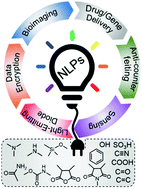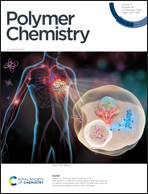Recent advances in the development and applications of nonconventional luminescent polymers
Abstract
Traditional luminescent polymers typically contain extended π–π conjugated structures that suffer from associated aggregation-caused quenching (ACQ) and high cytotoxicity issues. Therefore, there is a huge demand for stand-alone luminescent polymers that can circumvent these drawbacks and can be employed in diverse applications. In view of that, nonconventional luminescent polymers (NLPs) are being developed and studied extensively for their distinctive characteristics and potential applications in wide-ranging areas, and for an in-depth understanding of photophysical processes in science. These polymers do not contain classical chromophores, but often involve isolated benzene rings or only electron-rich moieties (e.g. amine, C![[double bond, length as m-dash]](https://www.rsc.org/images/entities/char_e001.gif) O, –OH, ether, imide, and heteroatoms N, O, P, S, etc.). This review article highlights the recent progress in the field of NLPs, including their synthesis, underlying emission mechanisms, and applications in materials and biological sciences. Besides, it is identified to be the foremost review that extensively emphasizes on both the fluorescence and phosphorescence features of NLPs. Finally, some prospects have been suggested for further exploration in this flourishing field of research.
O, –OH, ether, imide, and heteroatoms N, O, P, S, etc.). This review article highlights the recent progress in the field of NLPs, including their synthesis, underlying emission mechanisms, and applications in materials and biological sciences. Besides, it is identified to be the foremost review that extensively emphasizes on both the fluorescence and phosphorescence features of NLPs. Finally, some prospects have been suggested for further exploration in this flourishing field of research.

- This article is part of the themed collection: Polymer Chemistry Pioneering Investigators 2021


 Please wait while we load your content...
Please wait while we load your content...